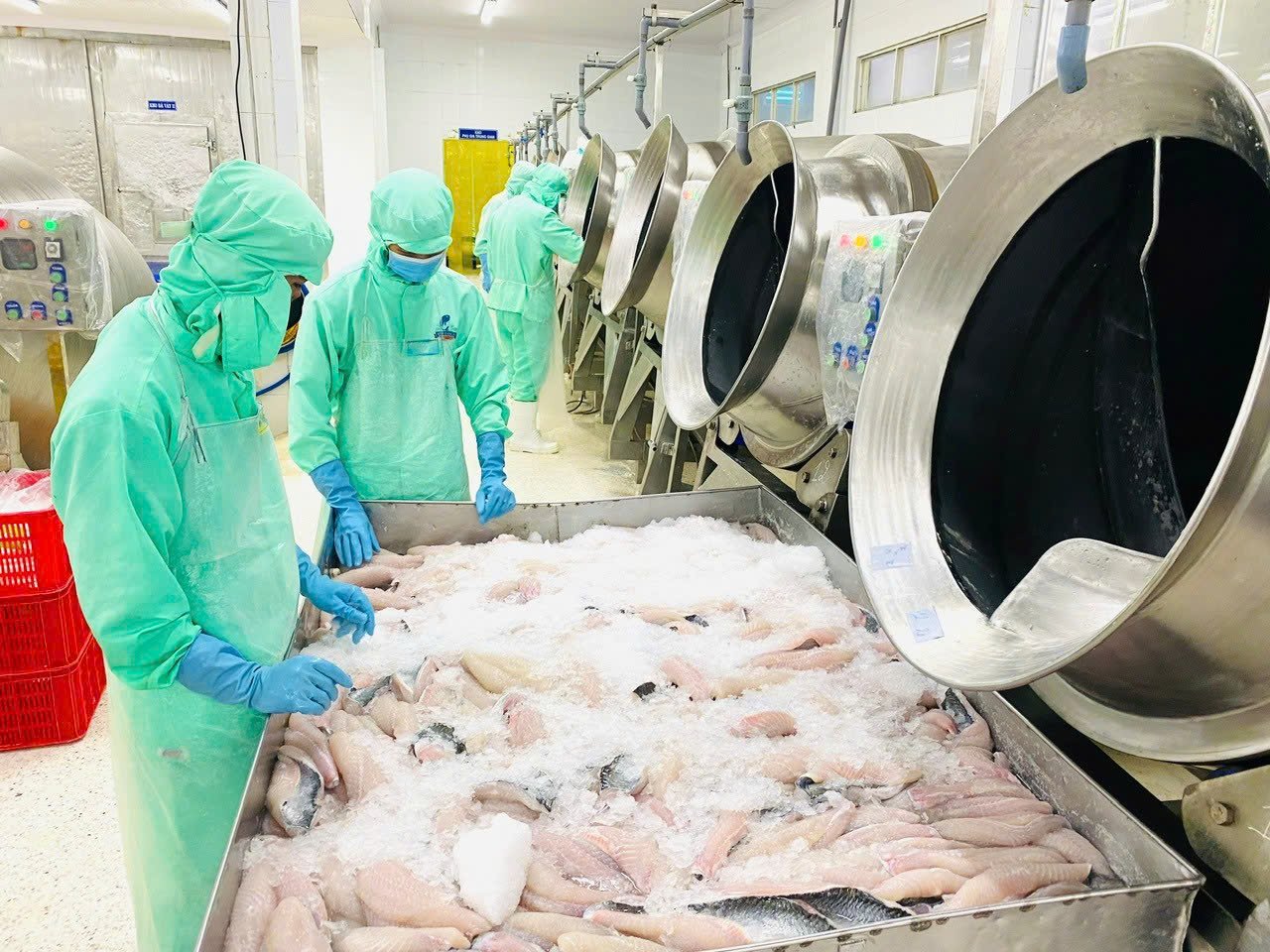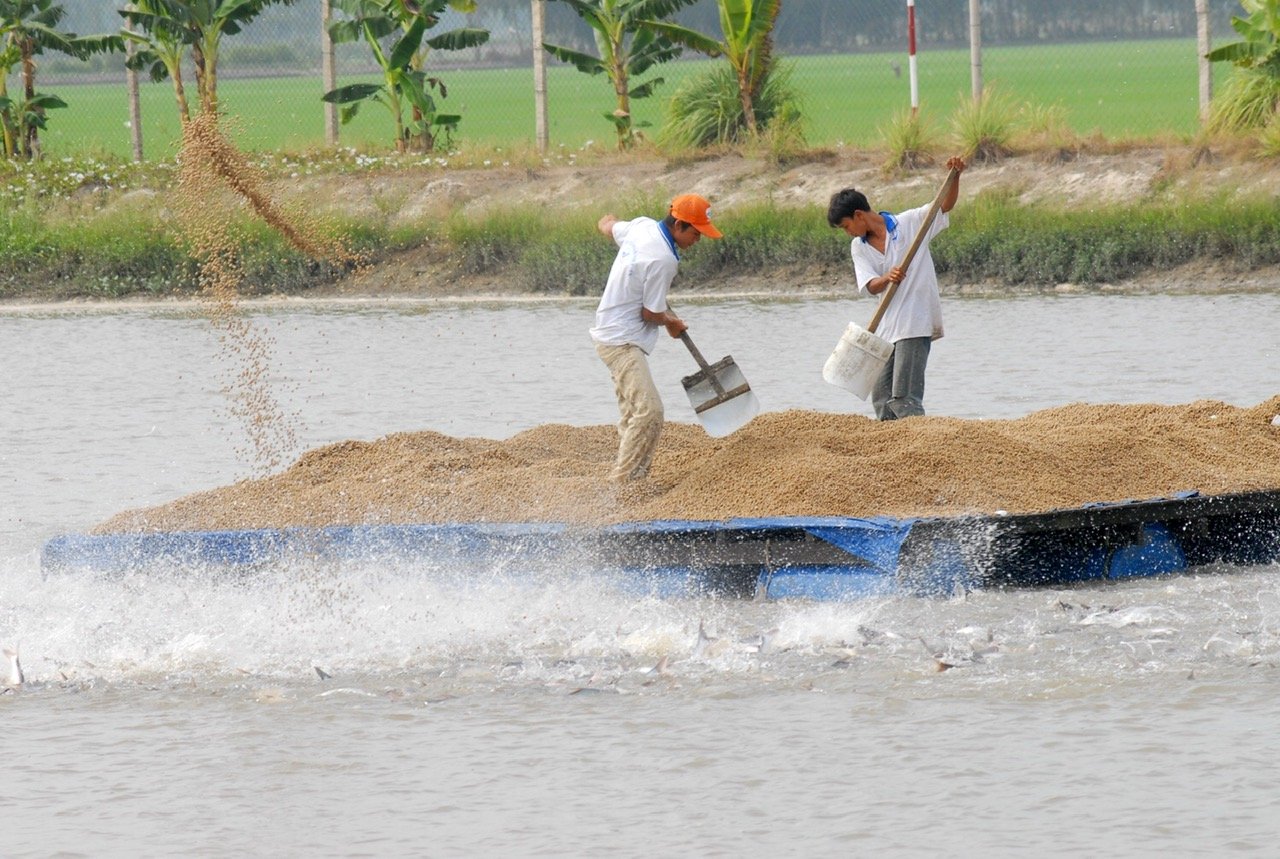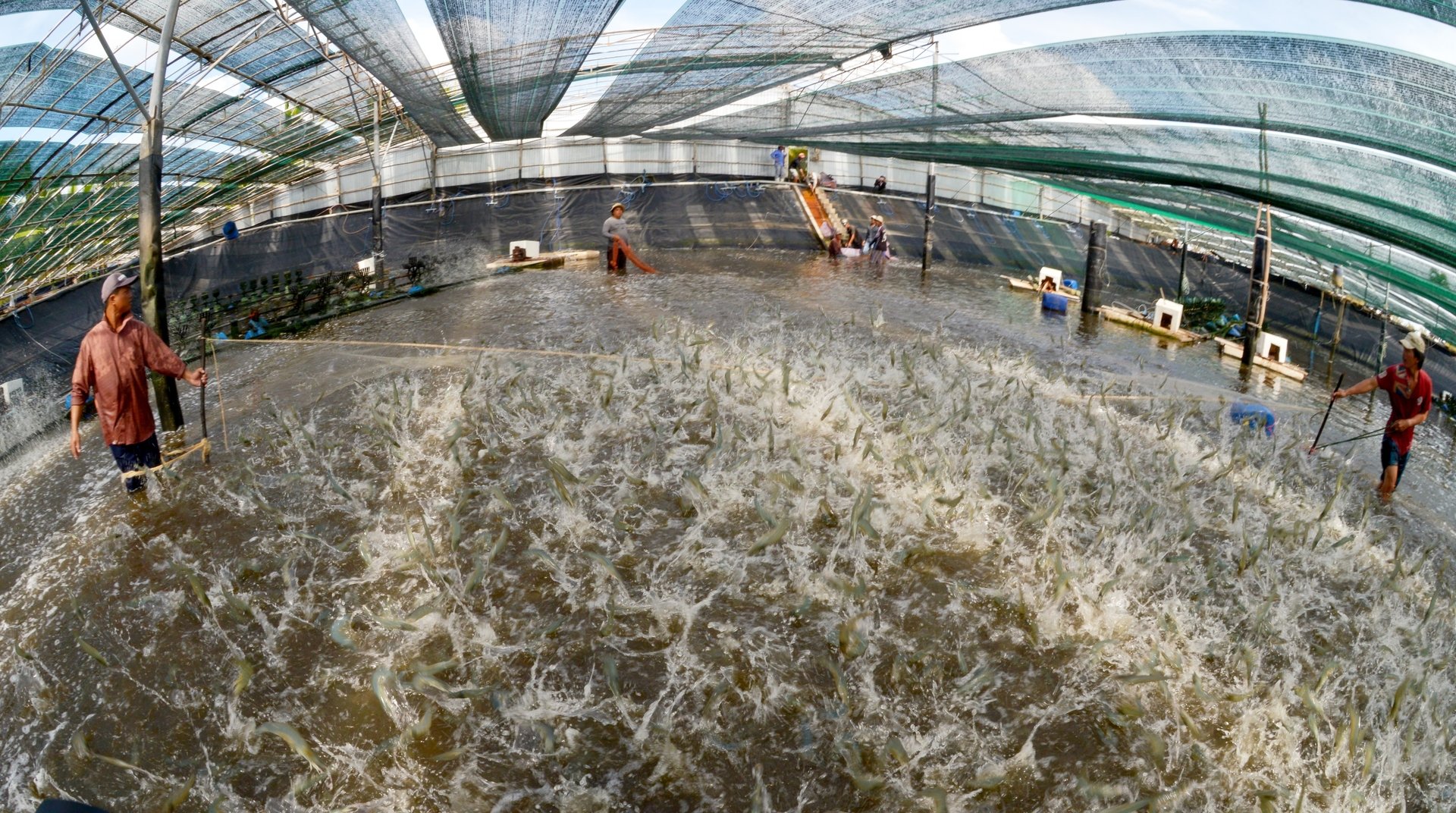December 17, 2025 | 01:05 GMT +7
December 17, 2025 | 01:05 GMT +7
Hotline: 0913.378.918
December 17, 2025 | 01:05 GMT +7
Hotline: 0913.378.918

Growth of the seafood industry cannot rely solely on output, but must be based on quality, sustainability, and the ability to meet global green standards. Photo: Hong Tham.
The global seafood market reached USD 368.98 billion in 2024. It is forecasted to grow from USD 386.99 billion in 2025 to USD 651.39 billion in 2032, with a compound annual growth rate (CAGR) of 7.72% during 2025–2032. The Asia-Pacific region led the seafood market with a 43.92% share in 2024.
The market is growing rapidly thanks to rising per capita consumption, higher disposable incomes, and the spread of pescetarian diets (vegetarian diets that include seafood) worldwide.
In recent years, there has been a strong shift toward healthier eating habits, influencing consumer preferences. The global market share in the food industry is expected to increase further as more people prioritize seafood products over poultry and beef, since seafood offers equivalent protein with fewer calories. This change in consumption patterns will continue driving market growth.
Rising global seafood demand creates major opportunities for Vietnam. However, it also brings stricter requirements on quality and environmental responsibility. Therefore, encouraging businesses to adopt sustainable production and apply eco-friendly technologies is not only an inevitable trend but also the key to boosting competitiveness and enabling Vietnam’s seafood sector to integrate globally.

The seafood industry is considered one of the sectors most strongly affected by environmental pollution. Photo: Hong Tham.
According to Mr. Tran Dinh Luan, Director General of the Department of Fisheries and Fisheries Surveillance (Ministry of Agriculture and Environment), the seafood industry is identified as one of Vietnam’s spearhead economic sectors in the marine economy with rapid growth. However, the sector also faces significant challenges, including environmental issues and the degradation of coastal ecosystems.
In particular, to address environmental challenges in the seafood industry, the Prime Minister approved Decision No. 911/QD-TTg on July 29, 2022, concerning the Environmental Protection Project in Fisheries for the 2021–2030 period (referred to as Project 911).
The Project aims to control and prevent pollution in seafood activities; prevent and address environmental incidents; protect and restore fishery resources and habitats, contributing to halting biodiversity loss; enhance climate change adaptation capacity; reduce greenhouse gas emissions; and build circular and green economy models in seafood activities to protect the environment and ensure sustainable sector development.
Project 911 is not only a management tool but also a “green passport” for Vietnam’s seafood to enter the global market with a responsible and modern image.

It is necessary to focus on developing aquaculture models based on the circular economy and green economy; promoting organic aquaculture production, high-tech applications, and environmentally friendly practices. Photo: Hong Tham.
Experts note that Vietnam’s seafood sector faces new-generation barriers such as emission reduction, fair trade, animal welfare, and environmental protection. This requires early preparation, including aligning the legal framework and promoting green production and green transition, especially reducing greenhouse gas emissions, to meet the increasingly strict demands of international markets.
Deputy Minister of Agriculture and Environment Phung Duc Tien emphasized: “Moving toward a green seafood industry is mandatory and irreversible in line with global trends. At the very least, we must internalize the concept from now on; if we delay, deep integration will be difficult. Absolutely no room for superficial or movement-based approaches.”
Dr. Ho Quoc Luc, former Chairman of the Vietnam Association of Seafood Exporters and Producers (VASEP), Chairman of the Board of Sao Ta Foods Joint Stock Company (Fimex VN), shared that ‘greening’ and, more broadly, sustainable development is the inevitable path for businesses that want to survive and grow. Greening the sector starts with greening every link in the chain. Among these, farming deserves the most attention since it generates significant waste (emissions and solid waste), though less than land-based livestock such as cattle or poultry.
Dr. Ta Quang Ngoc, former Minister of Fisheries, offered another perspective on green growth in seafood: leveraging the potential of the sea to achieve green growth goals.
Accordingly, alongside responsible exploitation that protects marine resources, preserves biodiversity, and avoids pollution, effective actions are needed to make Vietnam’s exclusive economic zone (EEZ) of more than 1 million square kilometers a crucial area for achieving national green growth objectives. These factors must be incorporated into overall environmental protection strategies, particularly those of the Ministry of Agriculture and Environment. In a holistic view, the sea should be considered the foundation for developing sustainable green agriculture.
In the coming years, combining the establishment of multi-sector marine economic hubs, major fisheries centers linked with key fishing grounds, and marine aquaculture (as outlined in the Draft Political Report for the 14th National Party Congress) with efforts to plant or restore marine green belts such as mangrove forests and seagrass meadows, enrich plankton, and expand seaweed farming and processing projects will significantly enhance the ocean’s carbon sequestration capacity through photosynthesis.
Translated by Huong Giang

(VAN) Dien Bien is speeding up ODA projects to respond to climate change and strengthen water management and disaster prevention infrastructure in pursuit of sustainable development.

(VAN) With high automation, large capacity, and a green development orientation, the Hai Duong Plant Branch is becoming an important anchor for the animal feed market.
/2025/12/01/2936-2-222331_70.jpg)
(VAN) Mortgaging his house and giving up a pharmaceutical management career, Mr. Nguyen Quang Duy succeeded in bringing Khanh Hoa's sea grapes to demanding markets such as Japan and the U.S.

(VAN) The large-scale agroforestry investment project aims to develop a leading sustainable agro-industrial center in Angola.
/2025/11/28/3433-1-212821_213.jpg)
(VAN) Many localities across the coconut land of Vinh Long are replicating emission-reducing models in production and daily life, contributing to the targets for emission reduction and green economic development.

(VAN) The green transition is an inevitable path for collective economy to achieve balanced growth and align with global trends.

(VAN) The TH Group is not only Vietnam’s leading clean-milk producer; it is also leaving a strong mark on sustainable development as it pursues the goal of carbon neutrality.